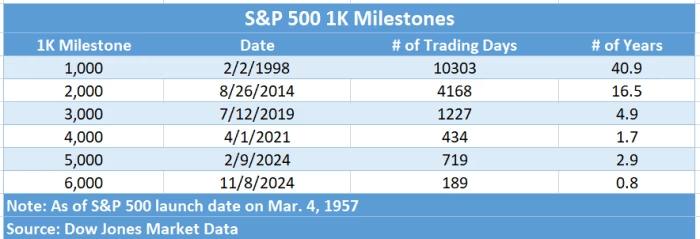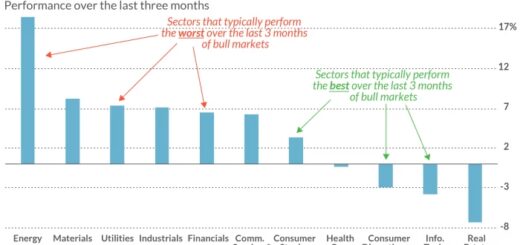S&P Hits 6,000, Dow Breaks 44,000 — What’s Next?
Tony Roth, Chief Investment Officer at Wilmington Trust, projects that the S&P 500 could climb into the mid-6,000s over the next two months, as recent market optimism shows no signs of slowing.
On Monday, the S&P 500 closed above 6,000, while the Dow Jones Industrial Average topped 44,000 for the first time. Both indexes are riding the momentum from last week’s rally following Donald Trump’s presidential victory and a 25 basis point rate cut by the Federal Reserve.
Clark Geranen, chief market strategist at CalBay Investments, highlighted the S&P’s 6,000 milestone as “a psychologically significant level” that could draw in more investors still holding cash in money-market funds and bonds. He attributes the market’s recent strength to a combination of easing volatility, boosted by a drop in the VIX, and renewed optimism in the economy.
On Monday, the S&P 500 gained 5.81 points, or 0.1%, to close at 6,001.35—marking its first close above 6,000. The Dow rose 0.7% to 44,293.13, reaching another historic milestone. According to Dow Jones Market Data, this marks the quickest 1,000-point climb for the index in its history.
Leading this surge were stocks like Vistra Corp., Palantir Technologies Inc., Targa Resources Corp., Nvidia Corp., and United Airlines Holdings Inc.

The recent rally gained strength after Trump’s return to the White House and prospects of a Republican-led Congress, with the Fed’s rate cut providing an extra boost. The Nasdaq Composite Index also showed resilience, inching up 0.1% on Monday after a strong week of gains.
Yet some analysts urge caution. Paul Christopher, head of global investment strategy at Wells Fargo, warns that while the market has latched onto specific policy hopes, these selective reactions may not guarantee lasting gains. He suggests waiting for a clearer picture of the administration’s main policy directions.
Bond markets, closed Monday for the Veterans Day holiday, are also on investors’ minds. The 10-year Treasury yield recently ended at 4.307%, raising concerns over inflation and potential impacts of higher borrowing costs on equities. Roth remains bullish in the near term but notes that once Trump takes office, the market will be looking closely at his plans for lowering taxes without excessively increasing deficits.




